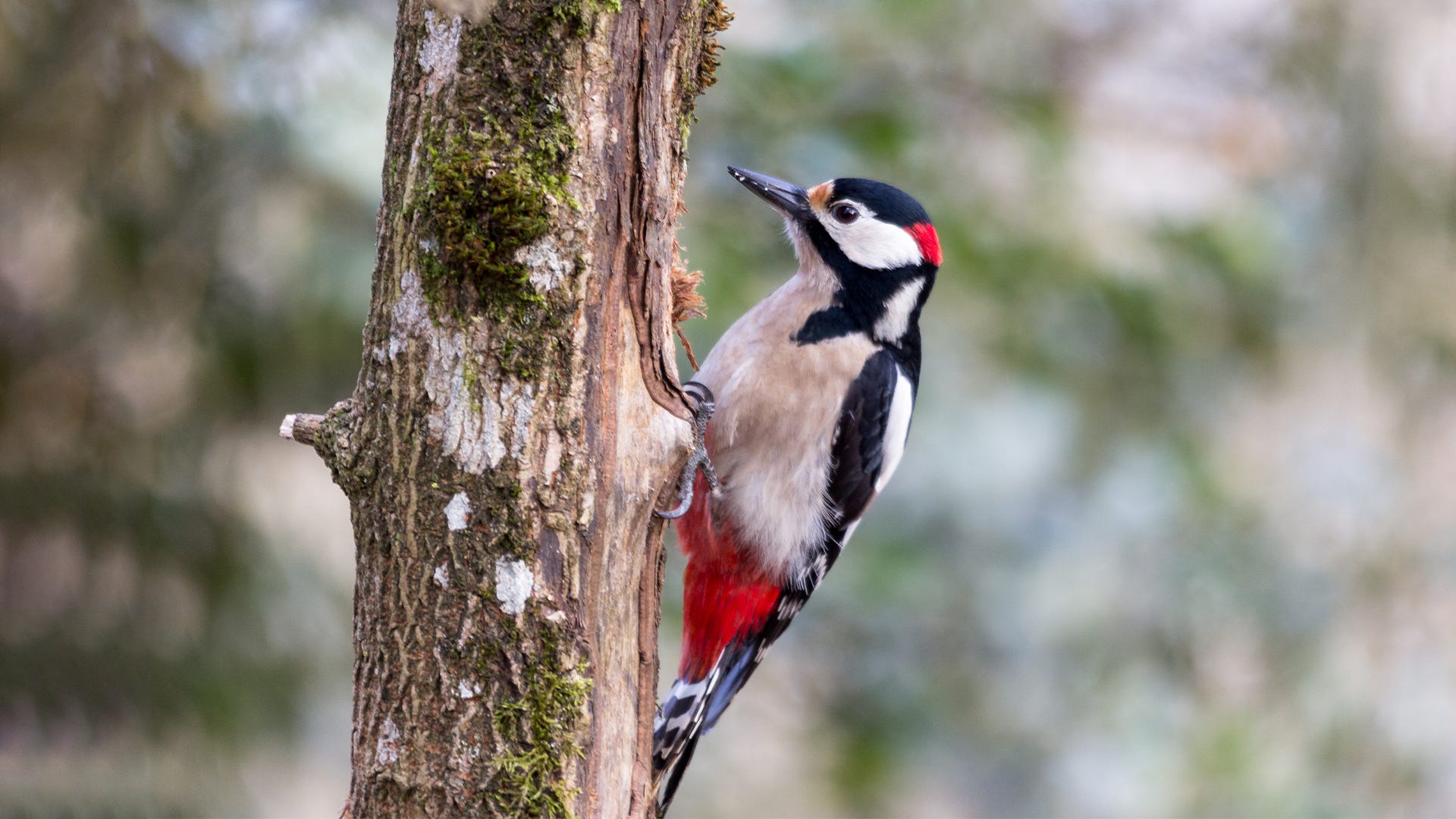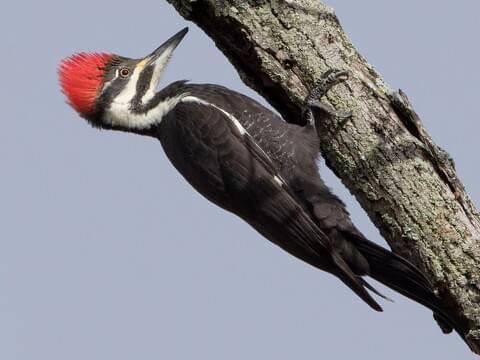Woodpeckers in Florida: Identification Tips and Habitat Preferences
Wiki Article
Woodpeckers Unleashed: Discovering the Marvels of These Knowledgeable Tree Mountain Climbers
Woodpeckers, with their unique markings and rhythmic drumming echoing with wooded locations, hold a distinct area in the avian globe - Woodpeckers in Florida. As we delve into the complex information of woodpeckers' nesting routines, feeding methods, and the recurring preservation initiatives to secure these impressive birds, a much deeper gratitude for their place in nature unfolds.Composition and Adaptations
When examining the makeup and adjustments of woodpeckers, one can observe impressive attributes that make it possible for these birds to grow in their specialized eco-friendly specific niche. In addition, woodpeckers have zygodactyl feet, with 2 toes dealing with forward and two encountering backward, providing a firm grasp on tree trunks while they look for food or drum for communication.Furthermore, woodpeckers have an one-of-a-kind tongue structure that is long, barbed, and sticky, allowing them to draw out insects from holes in wood. This specific adaptation enables woodpeckers to exploit a food source that is unattainable to lots of other bird varieties. Generally, the anatomy and adjustments of woodpeckers display the exceptional evolutionary remedies that have actually allowed these birds to grow in their arboreal habitat.
Drumming Actions
Having discovered the composition and adjustments of woodpeckers, the focus currently changes to recognizing their drumming actions, a distinct facet of their communication and territorial displays. Drumming is an essential form of interaction among woodpeckers, serving several purposes such as developing regions, drawing in companions, and signaling alarm. Each woodpecker types has a special drumming pattern that aids people identify members of their very own species and identify them from rivals or predators.Woodpeckers generate drumming noises by swiftly pecking on resonant surfaces such as dead trees, energy posts, or also metal items, creating a series of balanced beats. The strength and speed of drumming can differ based upon the function; for circumstances, a rapid drumming series might indicate aggression in the direction of burglars, while a slower and softer drumming pattern could show courtship (Woodpeckers in Florida). Additionally, woodpeckers might adjust the frequency and period of their drumming to share details messages successfully
Nesting Behaviors
Exploring the nesting practices of woodpeckers exposes remarkable understandings into their reproductive actions and habitat choices. Woodpeckers are recognized for their special nesting choices, typically excavating tooth cavities in trees to produce sheltered areas for elevating their young. These dental caries offer not only as a nesting website yet also as a safe and secure haven from predators and stormy weather.Woodpeckers exhibit a high level of fidelity to their nesting sites, commonly returning to the exact same area year after year. This behavior highlights the significance of appropriate habitat accessibility for their reproductive success. The choice of a nesting site is important for woodpeckers, with variables such as tree species, height, and degeneration phase playing considerable roles in their decision-making process.
Interestingly, some woodpecker species are recognized to dig deep into several dental caries within their region, giving themselves with different nesting choices. This technique may serve as a form of insurance versus prospective risks or disturbances to their main nesting site.

Feeding Techniques
Woodpeckers utilize a selection of specialized feeding methods to acquire their primary food sources. Among one of the most distinct feeding actions of woodpeckers is drumming, which involves fast pecking on trees to discover pests under visit this site right here the bark. This drumming not only helps them situate target but also acts as a way of interaction with various other woodpeckers. Woodpeckers have solid, chisel-like beaks that permit them to drill into wood effortlessly. As soon as a hole is created, they use their long, barbed tongues to draw out bugs such as ants, beetles, larvae, and crawlers. These tongues are coated with sticky saliva that helps trap the prey. Woodpeckers are likewise understood to excavate tooth cavities in trees to gain access to covert insect larvae or sap. Some types, like the acorn woodpecker, store nuts in specifically produced holes called granaries. This strategic storing of food visit this website assists them survive during food shortage periods. Woodpeckers are really amazing in their feeding methods, showcasing adaptability and intelligence in procuring their nourishment.Conservation Efforts
In the middle of the elaborate feeding techniques showed by woodpeckers, the preservation efforts focused on guarding these remarkable birds play a crucial duty in protecting their habitats and populations. Woodpeckers deal with various hazards to their survival, consisting of habitat loss as a result of deforestation, environment change modifying their environments, and accidents with synthetic frameworks such as buildings and cars - Woodpeckers in Florida. Conservationists are proactively working to attend to these challenges and make certain the long-term wellness of woodpecker varieties
Education and public understanding campaigns are also vital parts of woodpecker conservation efforts. By elevating awareness regarding the importance of these birds in keeping healthy forest ecological communities, guardians can amass assistance for habitat preservation initiatives and advertise accountable land management practices. With collaborative initiatives between scientists, policymakers, and neighborhood neighborhoods, we can interact to secure a future where woodpeckers grow in their natural environments.
Conclusion

Report this wiki page